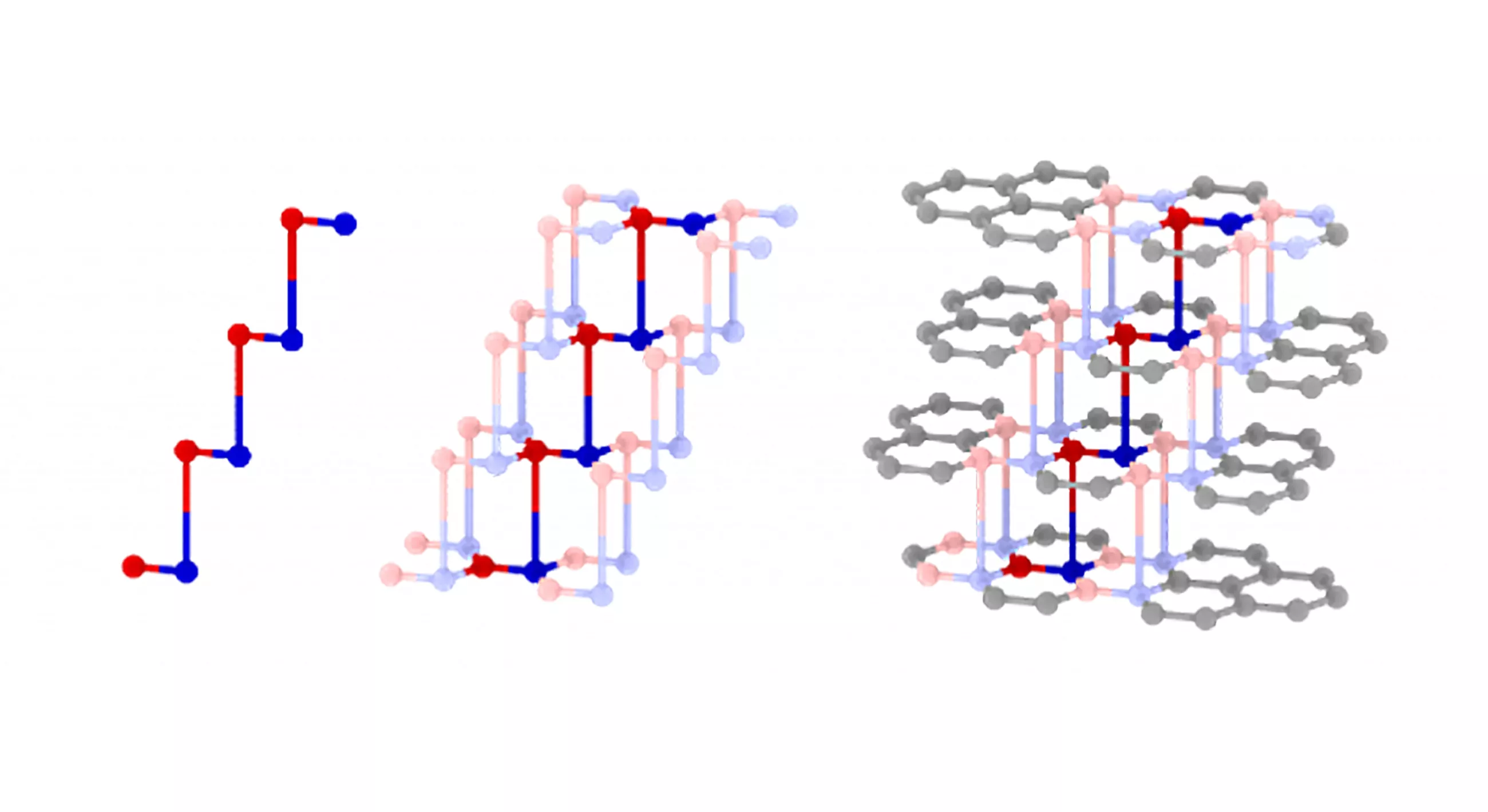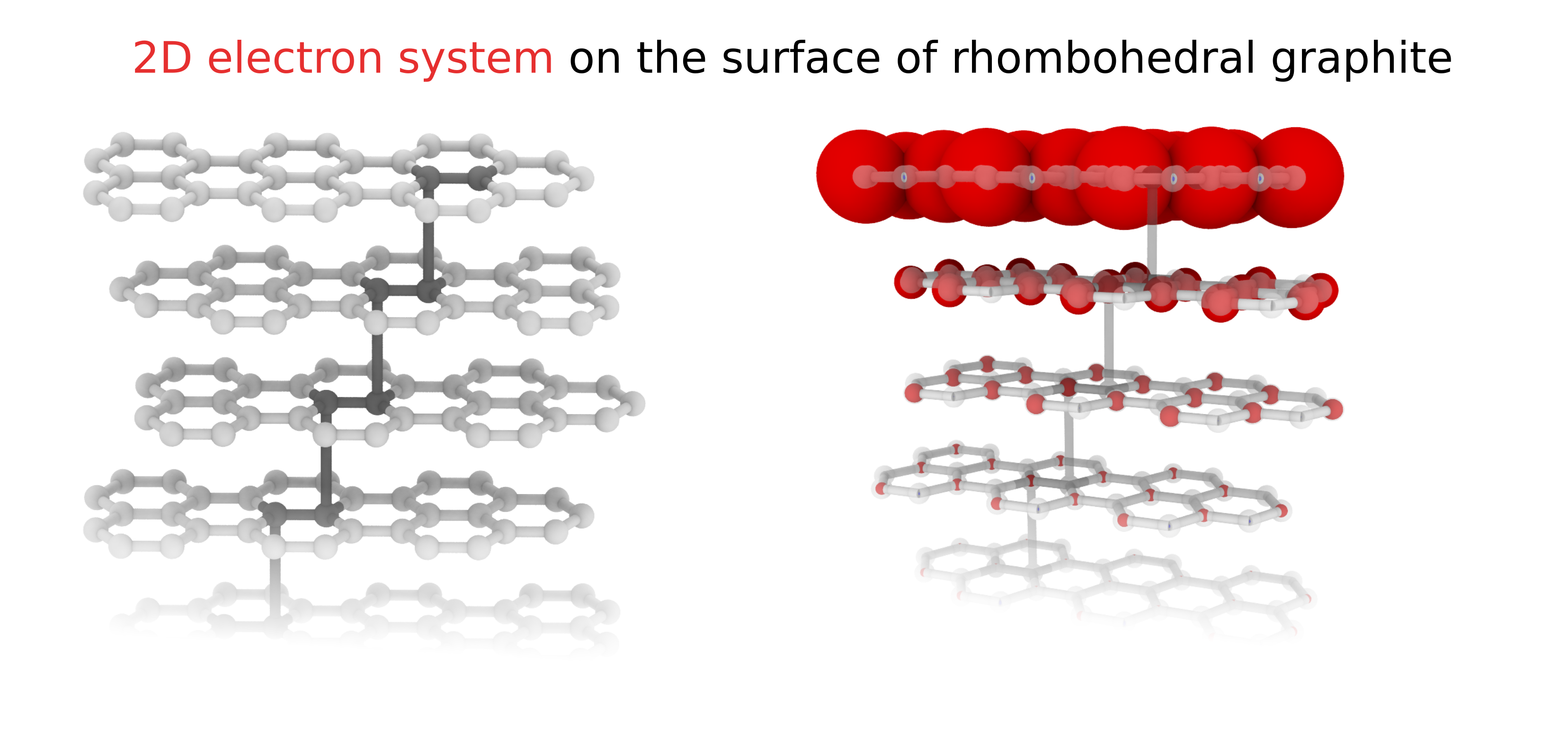The interaction of electrons with each other and their topological properties result in quasiparticles such as Majorana bound states, fractionalized spin and charge, etc. Understanding the physics of these emergent quantum systems promises the realization of topological electronics, robust quantum bits, high temperature superconductivity, etc. Deep insights into new physics nearly always result from studying the simplest possible systems. However, in the case of correlated states this is rarely the case as they are hosted by binary, ternary or even more complicated materials. Rhombohedral graphite (RG) is a topological semimetal and as researchers at the ELKH Centre for Energy Research (EK-CER) show in their paper published in Sciences Advances, it is possibly the simplest material showing strong correlations between its electrons. Its simplicity stems from the fact that RG is made up of only graphene sheets stacked in a special staggered fashion..

The staggered chain of carbon atoms, as highlighted in blue and red, forms the crystal
This stacking, highlighted by the red and blue atoms above, results in a flat band that is localized on the top and bottom graphene layers. This surface state is visualized below as red spheres centered on the carbon atoms in the top graphene layer of an RG crystal. The size of the spheres is proportional to the density of electrons on the carbon atoms.

Strong correlations are present in this surface state and, according to our STM measurements, survive up to at least 16 Kelvin. STM measurements of the researchers provide evidence that the ground state at charge neutrality is closely related to a quantum magnet. Important properties of this are a gapped and gapless state, which are degenerate and therefore form a domain structure on the surface of RG.
EK-CER researchers’ results establish rhombohedral graphite as a new platform to study strongly correlated electrons.